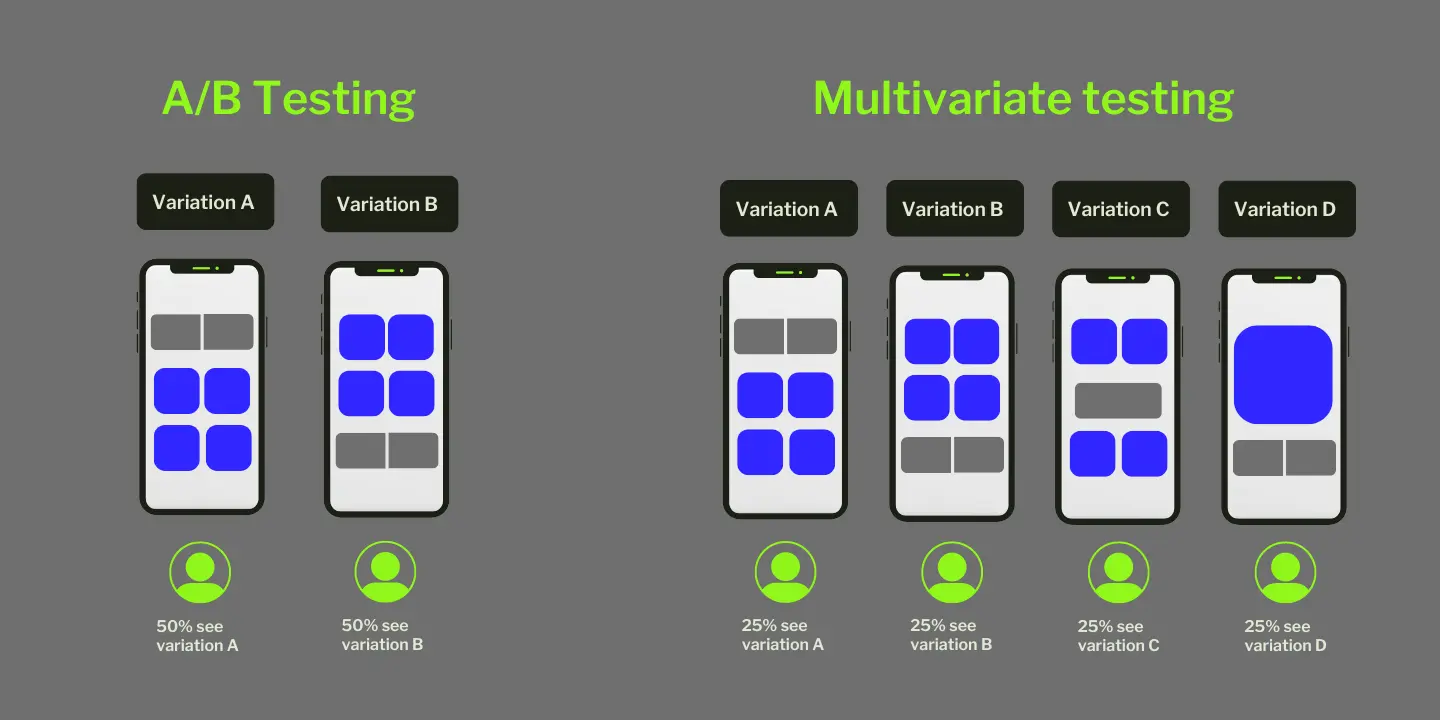Understanding Multivariate Testing

The Concept of Multivariate Testing
Multivariate testing (MVT) is a powerful tool in conversion optimization. Unlike A/B testing, where only one variable is tested at a time, MVT allows for the simultaneous testing of multiple variables, helping you understand which combination drives the most conversions. For instance, you might test different versions of both a title and an image on a webpage, creating a matrix of possibilities. For more information on this topic, check out this comprehensive Wikipedia article about Multivariate testing on Wikipedia.
The History of Multivariate Testing
The roots of MVT can be traced back to the 1700s when a British Royal Navy surgeon unknowingly conducted what would be considered the first multivariate test. By treating sick crew members under different conditions, he was able to discern the most effective treatment for scurvy. This historical analogy illustrates the power of MVT - it helps us determine the most effective combination of variables.
Multivariate Testing Methods
There are two main methods for conducting MVT: Full Factorial and Fractional Factorial. Full Factorial testing involves testing all possible combinations of variables, while Fractional Factorial testing involves testing only a fraction of possible combinations, with the results of untested combinations statistically deduced. Each method has its pros and cons, and the choice depends on your specific needs and available resources.
Implementing Multivariate Testing
Identifying the Right Hypotheses
The key to successful MVT is having a strong hypothesis for each element being tested. A hypothesis is a clear, testable prediction about the effect of certain changes on a website. To create a robust MVT hypothesis, you must identify a problem with identifiable causes, propose a potential solution, and make a clear prediction linked to the problem. For more tips on creating strong MVT hypotheses, check out these articles.
Testing Sample Size and Duration
To test MVT hypotheses, you need a larger sample size because MVT is essentially several parallel A/B tests. The required sample size should never exceed your level of website traffic, unless you are willing to wait an extended period for valid test results. High traffic is crucial for MVT as it requires more traffic than A/B testing.
Choosing the Right Tools
Selecting the right AI tool for MVT is crucial. AB Tasty is one such tool that provides a user-friendly interface for MVT and offers a wealth of information to help understand user behavior. It includes features like heatmaps, session recording, client feedback, and more.
Optimizing Conversion with Multivariate Testing
Benefits and Limitations
MVT offers several benefits. It can save time by performing several A/B tests at the same time, determine the impact of each variable on measured gains, and measure the impact of interactions between different elements. However, it also has limitations. It requires a significant number of visitors for results to be statistically significant and may lead to complexity in analysis. The choice between MVT and A/B testing depends on your specific needs and resources.
Best Practices
Establish a Clear Objective
The first crucial step in MVT is having a clear objective. Knowing what you want to achieve with your test will guide your decisions regarding what elements to test and how to interpret the results. For instance, if your objective is to increase the conversion rate on a product page, you might test different combinations of product images, product descriptions, and call-to-action (CTA) buttons. Having a clear objective also makes it easier to measure the success of your test.
Start Simple
While MVT allows you to test multiple variables simultaneously, it's advisable to start with simpler tests, especially if you're new to MVT. Starting simple helps you get a grasp of how MVT works and allows you to understand the impact of changing one element at a time. Once you're comfortable with simpler tests, you can gradually increase the complexity by testing more variables and combinations.
Continual Learning and Iteration
MVT isn't a one-and-done solution but a process that involves continual learning and iteration. Each test you conduct provides valuable data about your website visitors' preferences and behaviors. The more tests you conduct, the more data you gather, and the better your understanding of what works and what doesn't. Use the insights gained from each test to inform your future tests. Continual learning and iteration allow you to constantly improve your website and conversion rates.
Real-World Examples
A prime example of MVT in action is a test conducted by Dell, where they tested multiple variables on their product page, such as the layout of customer reviews, and the 'Add to Cart' button. The results showed a 6% increase in 'Add to Cart' clicks, illustrating the power of MVT.
Another case study involves Humana, a health insurance company. They used MVT on their landing page, testing the banner image, headline, and form field. As a result, they saw a 433% increase in their click-through rate.
Conclusion
Multivariate testing is a powerful tool for conversion optimization, providing detailed insights into the impact of multiple variables. By selecting the right hypotheses, tools, and methods, you can unlock the full potential of MVT and optimize your conversion rates. Remember to keep in mind the limitations of MVT and follow best practices to ensure the most successful outcomes. With the right approach, MVT can transform your conversion optimization strategy and deliver remarkable results.
See All AI Tools















